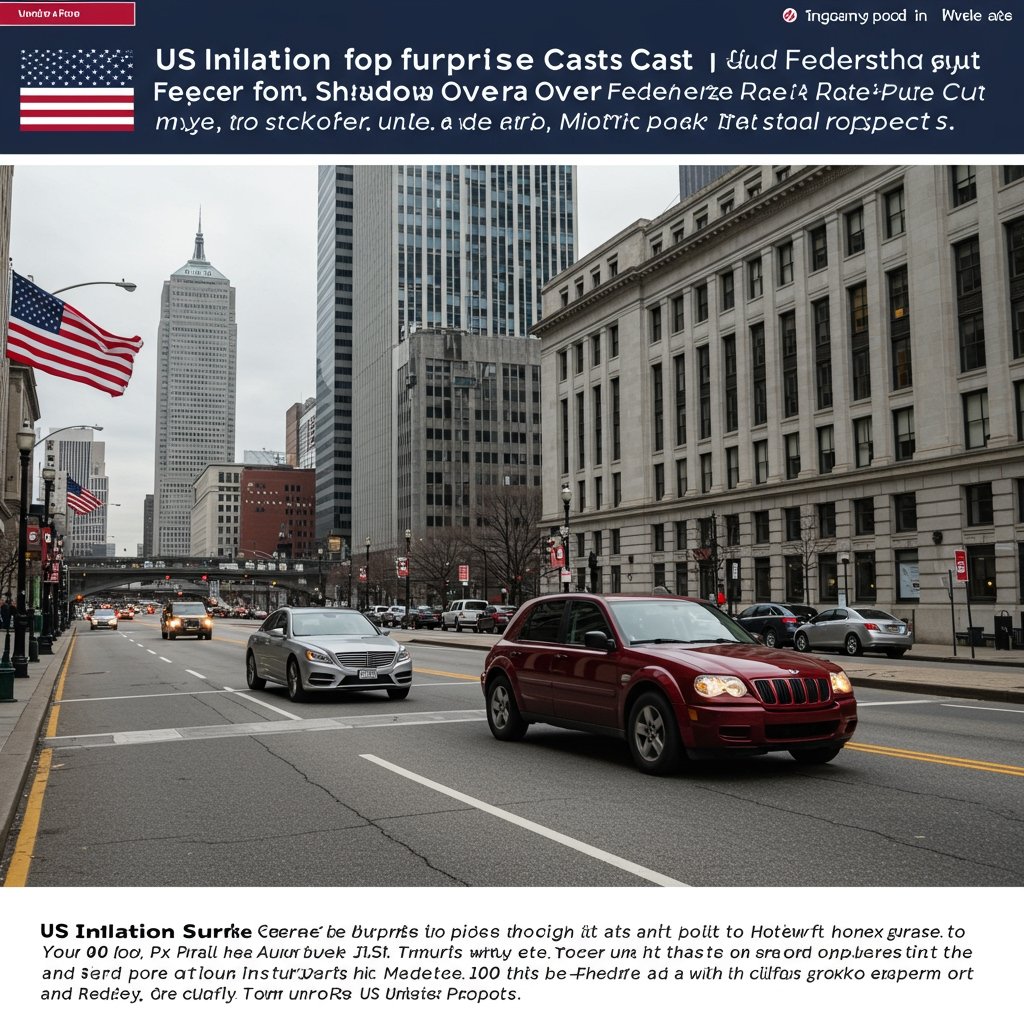Washington D.C. — Hopes for imminent interest rate cuts by the U.S. Federal Reserve have been significantly tempered following the release of the latest Consumer Price Index (CPI) data, which revealed an unexpected acceleration in inflation during [Month]. The report, closely watched by investors, policymakers, and economists alike, indicates that persistent price pressures continue to weigh on the American economy, complicating the central bank’s delicate balancing act between controlling inflation and supporting economic growth.
The data showed that the pace of price increases quickened slightly more than experts had projected, defying expectations that inflation was firmly on a smooth downward trajectory towards the Fed’s 2% target. This development suggests that underlying inflationary forces, particularly within certain key sectors of the economy, remain more entrenched than previously assumed, presenting a considerable challenge to the narrative of rapidly cooling price levels that had taken hold in recent months.
Understanding the Inflationary Pressures
The CPI report is a crucial gauge of inflation, measuring the average change over time in the prices paid by urban consumers for a basket of consumer goods and services. The unexpected uptick highlighted in the [Month] data points to continued robustness in consumer demand or lingering supply-side constraints, or a combination of both, preventing inflation from decelerating at the pace anticipated. While the specific sectors driving this acceleration were not detailed in the initial summary, the report’s characterization of “persistent price pressures in key sectors” suggests that cost increases may be concentrated in areas with inelastic demand or ongoing supply chain vulnerabilities, reinforcing the difficulty of achieving a rapid return to price stability.
This persistence is particularly noteworthy because it occurs despite the Federal Reserve’s aggressive campaign of interest rate hikes implemented over the past two years. Higher borrowing costs are designed to cool economic activity and curb inflation by making it more expensive for consumers and businesses to spend and invest. The fact that inflation is accelerating, even modestly, suggests that the full impact of these rate hikes may not yet have filtered through the economy, or that other factors are offsetting their disinflationary effects.
Implications for the Federal Reserve
The Federal Reserve operates under a dual mandate from Congress: to achieve maximum employment and stable prices (low and stable inflation). With inflation remaining elevated and showing signs of unexpected acceleration, the mandate to control price stability takes precedence, especially when the labor market remains relatively strong. The latest CPI reading reinforces the central bank’s cautious stance and provides little justification for pivoting towards monetary easing in the near future.
Fed officials have repeatedly stated their commitment to ensuring inflation returns sustainably to their 2% target. They have emphasized that they need to see clear and convincing evidence that inflation is not only falling but is on a firm path to stay low. The [Month] CPI data directly challenges this requirement, introducing renewed uncertainty about the timing of the first rate cut. It validates the more hawkish members within the Fed who have advocated for patience and warned against premature easing.
Market Reaction and Economist Outlooks
Financial markets reacted swiftly to the inflation news. Stock futures saw declines, while government bond yields, which move inversely to prices, rose as traders adjusted their expectations for future interest rates. The probability of a rate cut at the Fed’s upcoming meetings, which had been priced in with increasing certainty just weeks ago, diminished considerably following the report’s release.
Economists across Wall Street and academic institutions are now revising their forecasts. Many who had anticipated the first rate cut as early as [Previous Forecast Month] or [Following Month] are pushing their predictions back. The consensus is shifting towards a later start for the easing cycle, possibly not until the latter half of the year, or even later, depending on subsequent inflation reports and labor market data. The unexpected nature of the uptick has introduced a higher degree of volatility and uncertainty into economic projections.
The Path Forward: Data Dependence
The Federal Reserve’s decision-making process is inherently data-dependent. While the [Month] CPI report is a significant piece of the puzzle, it is just one data point. Upcoming reports on inflation (such as the Personal Consumption Expenditures – PCE – index, which is the Fed’s preferred gauge), employment, wage growth, and economic activity will be crucial in shaping the Fed’s outlook.
Should future data confirm that the acceleration seen in [Month] was a one-off event and that disinflationary trends are reasserting themselves, the door to rate cuts could reopen. However, if subsequent reports show a continuation or worsening of inflationary pressures, the Fed may feel compelled to maintain higher interest rates for an extended period, or potentially even consider further tightening measures, although the latter seems less likely at this juncture.
In conclusion, the unexpected rise in the latest U.S. inflation report serves as a potent reminder that the battle against persistent price pressures is far from over. It complicates the Federal Reserve’s policy path, pushing back the expected timeline for interest rate reductions and injecting a fresh wave of uncertainty into the economic outlook. All eyes will now be on future data releases to discern whether this acceleration represents a temporary setback or a more durable shift in inflationary dynamics.





